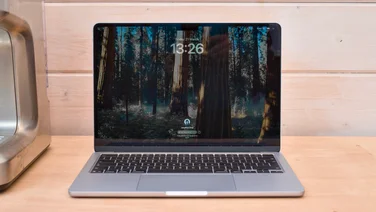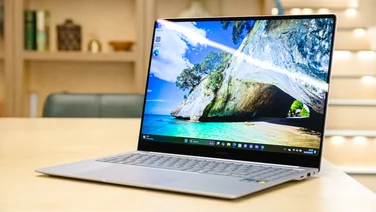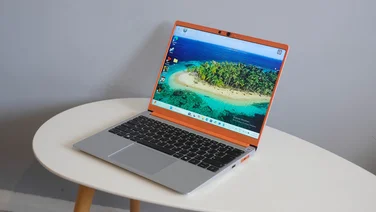To help us provide you with free impartial advice, we may earn a commission if you buy through links on our site. Learn more




The first version of Samsung’s Series 9 laptop wasn’t an official Ultrabook, but this refreshed version brings it into line with Intel’s specification. With a dark brushed metal finish, curved hinge and rounded corners, it has a distinctive appearance that helps it stand out from its competitors. A single Samsung logo on the lid helps retain the minimalist look, which continues when you lift the screen.

The Chiclet-style keyboard is backlit, so you should have no trouble working on the Series 9 in the dark. The spacious full-size keys are responsive and a pleasure to use, with plenty of spring, although we did spot a noticeable amount of flex in the keyboard tray. The integrated touchpad is also very easy to use, although as on some other ultrabooks it lacks physical touchpad buttons. The pad and buttons are combined into a single panel, and for the most part it worked accurately. Even so, the very limited tactile feedback made it difficult to tell if a click had been registered or not.

We were impressed with the image quality of the 13in display, which looked incredibly sharp despite its unremarkable 1,366×768 resolution. Pictures were vibrant at maximum brightness, although not quite as impressive as other ultrabooks we’ve seen – this is mostly because Samsung has opted to use a matt display finish, which mutes colour reproduction slightly. On the plus side, this has the benefit of reducing light glare significantly, so we had no trouble working under the harsh lights of our labs space. Viewing angles are about average and there’s a good range of screen tilt, so you shouldn’t find it too hard to get a comfortable working position.
The Series 9’s refresh has left it relatively unchanged on the outside, but inside Samsung has upgraded the processor to an Intel Core i5-2467M running at 1.6GHz. Combined with 4GB of RAM and a 128GB SSD, it completed our multimedia benchmarks with a somewhat disappointing overall score of 35. This isn’t the fastest performance we’ve seen from this particular chip, but the laptop is still quick enough for most day-to-day tasks. With a superb battery life of seven and a half hours, you can work for long stretches without worrying about the remaining charge.
Intel’s processor provides the graphics power through its integrated GPU. Although this has no trouble playing high-definition video, it struggles when playing modern games. With the Series 9 managing only 13.2fps in our Dirt 3 test, it can tackle recent titles only at lower resolution and detail settings.

Our main concern with the Series 9 is its poor connectivity. It continues to use flip-out ports, and you’ll need to carry the supplied adaptor around if you want to connect to a wired Ethernet. Its two USB ports are useful, especially as one supports USB3, but the memory card slot reads only MicroSD cards typically found in smartphones – it can’t be used for standard SD cards, widely used by still and video cameras.

Although the Series 9 is competent and looks great, it’s more expensive than other better-equipped ultrabooks. As such, there’s very little reason to choose it. In addition Samsung is about to launch a 2nd Generation Series 9 to replace this range entirely.






